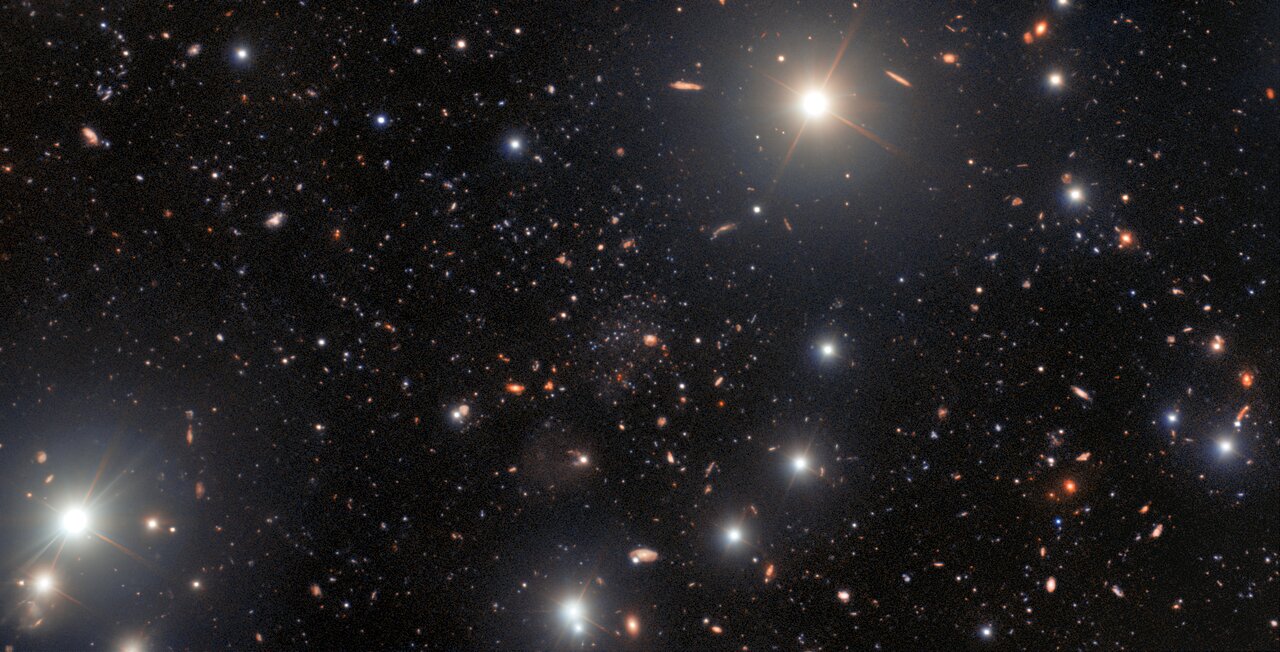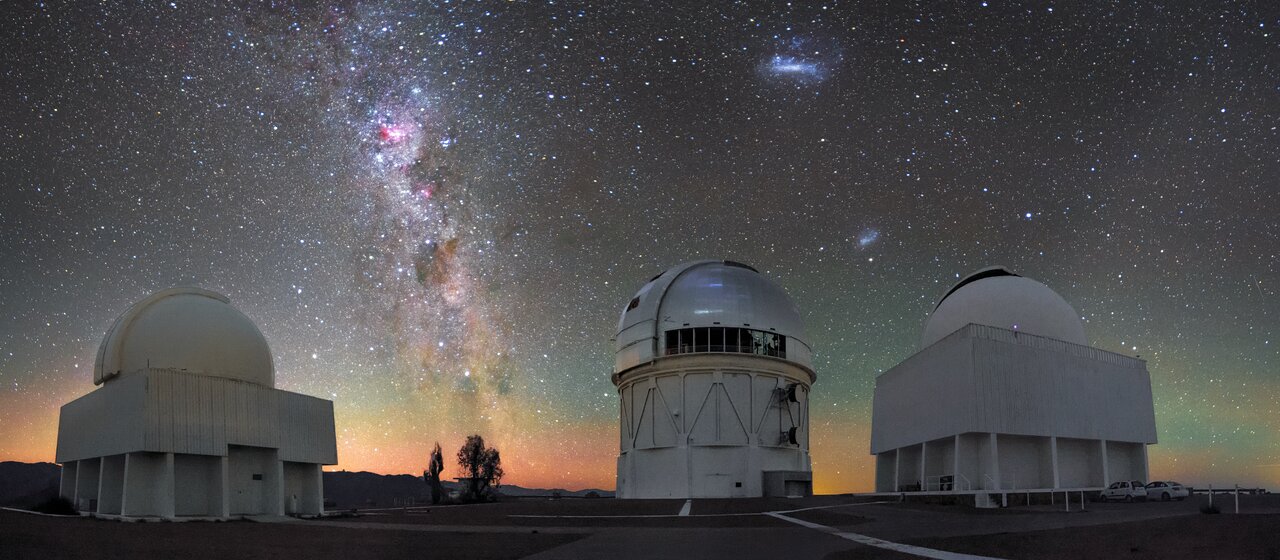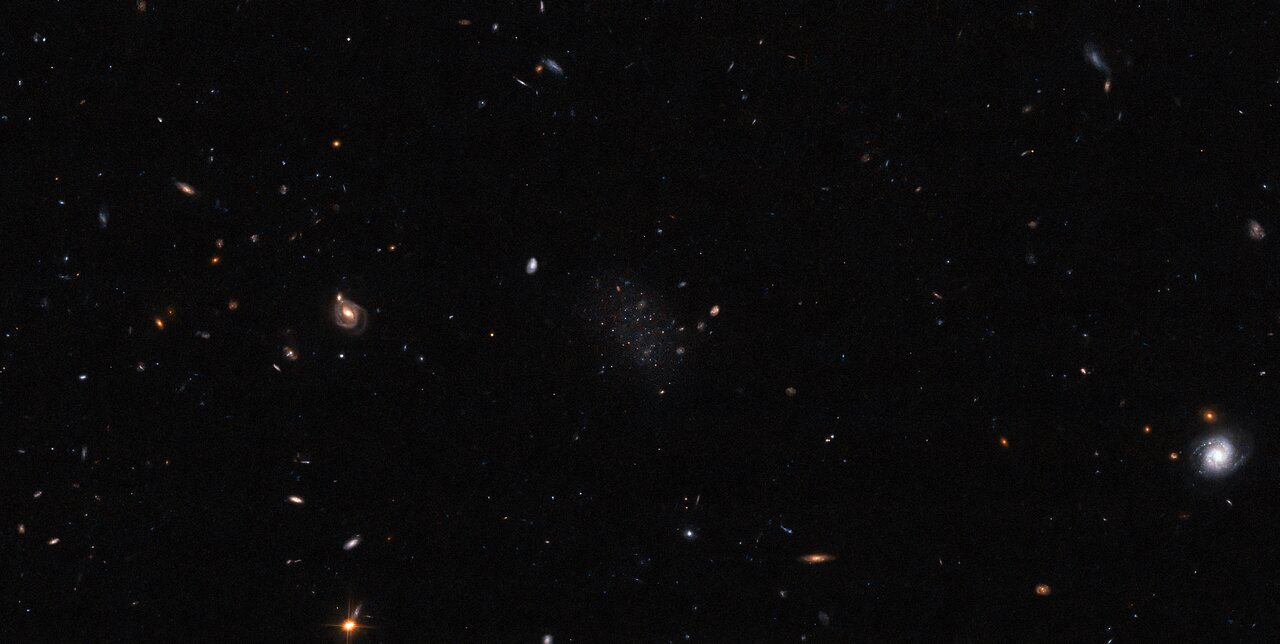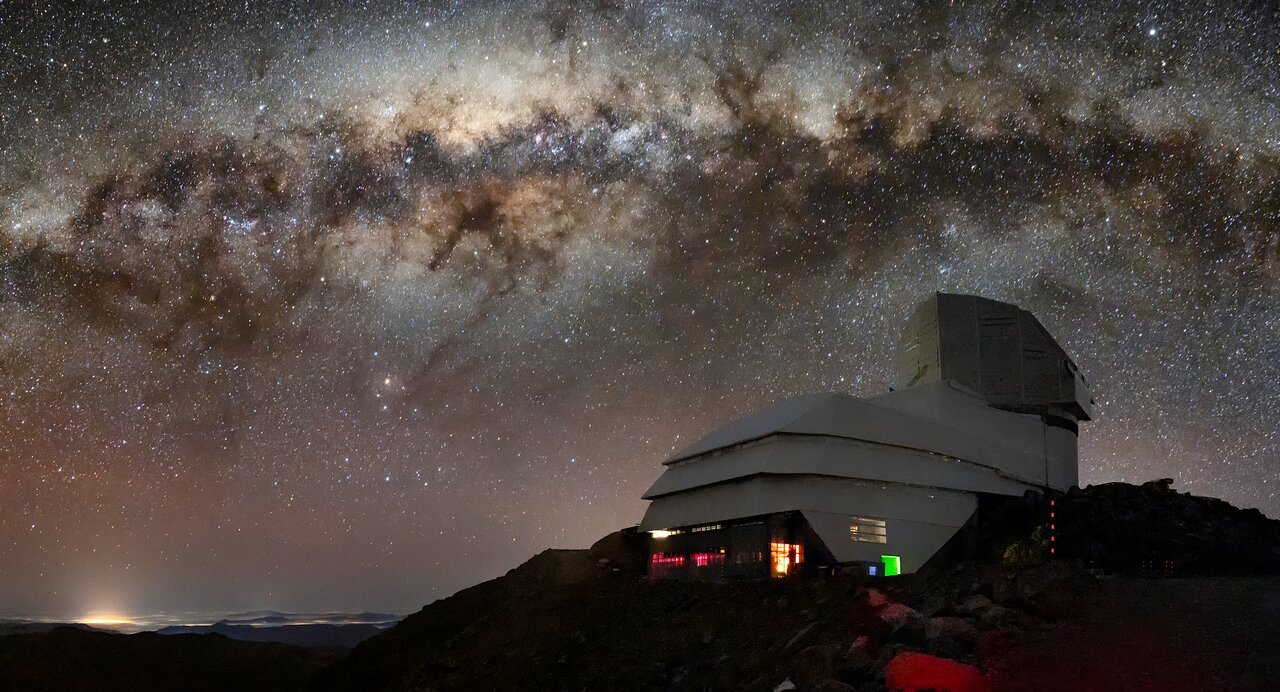
Getting to Know our Galactic Neighborhood
Inside the hunt for the Milky Way’s smallest neighbors.
10 Feb. 2023
Our Milky Way isn’t a lone outpost in the vastness of the Universe. Far from living in celestial solitude, the Milky Way shares its patch of the Universe with a whole host of smaller galaxies and star clusters. Two of these — the Large and Small Magellanic Clouds — are unmistakable adornments in the southern skies. Others, meanwhile, keep a much lower profile. Indeed, the majority are so small and faint that — despite being among our closest neighbors — they have long gone undetected. But thanks to advances in technology, and painstaking observations, the last few years have brought a slew of discoveries of newly spotted companions.
William Cerny is one such astronomer on the hunt for these elusive objects and describes the task as being like looking for the proverbial needle in a haystack. “We have to search large regions of the sky to find objects that often have a diameter of only about 1/30th of that of the Moon,” he explains.
Fortunately, this is exactly the kind of work that the Dark Energy Camera (DECam), built by the US Department of Energy, was designed to undertake. DECam is an instrument on the Víctor M. Blanco 4-meter Telescope at the Cerro Tololo Inter-American Observatory, a program of NSF’s NOIRLab. It combines a wide field-of-view with high sensitivity, meaning that it can scan large swathes of the night sky as well as pick out the faint stars making up neighboring dwarf galaxies.
In 2019, to take advantage of these impressive capabilities, a group of astronomers including Cerny set up a consortium called DELVE — the DECam Local Volume Exploration survey. Their research has already borne much fruit, with a recent paper reporting six more ultra-faint companions to the Milky Way.
These stellar systems are not all the same, though. They vary significantly in size, containing anywhere from several thousand to a few billion stars, so categorizing them is not always straightforward. Of the objects recently found by DELVE, three have been classified as ultra-faint star clusters and three are thought to be fully fledged — if extremely faint — dwarf galaxies. “It’s likely that two of these new systems may represent some of the smallest galaxies ever discovered,” adds Cerny.
And it isn’t only professional astronomers who have joined the quest to find these stellar systems. By painstakingly scouring archival data, Italian amateur astronomer Giuseppe Donatiello has identified six such objects since 2016, including two in the Local Group called Pisces VII and Pegasus V. Three of these — now called Donatiello II, III and IV — were tucked away in the DECam images, and are now known to be satellites of the Sculptor Galaxy (NGC 253). All these discoveries have matured in a research coordinated by the Spanish astrophysicist David Martínez Delgado.
It is a testament to Donatiello’s skill and dedication that he managed to spot them, especially since an algorithm designed specifically for the task had failed to pick them up. After all, even the highest quality algorithms still have difficulty teasing out the faintest galaxy candidates from noise in the data, so a more traditional hands-on approach is sometimes required.
“It certainly takes talent to find such cosmic ghosts,” says Donatiello, “but it must be said that the DECam images are of excellent quality. I love to browse those images if only for the pleasure of stumbling upon curious and interesting objects.”
Once a candidate has been spotted in a wide-field survey, more focused observations can be carried out to verify its nature. Donatiello II, for instance, was confirmed to be a dwarf galaxy by a program of the NASA/ESA Hubble Space Telescope, which was published recently by ESA as a picture of the week as shown below. Even here, the unassuming galaxy is difficult to spot, camouflaged among a multitude of stars on the right-hand side.
With the census of ultra-faint dwarf galaxies now standing at over 60 systems, what can we learn from these enigmatic objects, besides just getting to know our neighbors? Well, astronomers suspect that they hold a lot of clues about some of the biggest cosmological questions, including how galaxies form, what the early Universe was like, and even the mystery of dark matter.
The prevailing theories hold that, during the expansion of the Universe since the Big Bang, dark matter has collapsed in many places into distinct, self-contained parcels known as dark matter halos. Smaller examples, often residing inside halos, are called subhalos.
It is these pockets of higher gravity that are believed to have laid the foundations for galaxy formation, with matter having congregated on the structures, attracted by their gravitational pull. Since the smallest ultra-faint galaxies are hosted by the smallest subhalos — some of the earliest halos to form after the Big Bang — current theories suggest that those galaxies must therefore also be among the most ancient in the Universe.
Alas, life seems to have been cut short for these objects. Astronomers think that, during the epoch of reionization, when the first stars began to emit powerful radiation, this may have blown much of the gas away from these nascent galaxies, whose gravity was too small to keep hold of it. The dearth of gas would then have quenched the star formation prematurely.
This could explain why so many ultra-faint galaxies appear to have very ancient stellar populations, and are poor in the heavy elements that successive generations of stars produce. It can also account for their extremely low brightness — since they have smaller and older populations of stars, and a higher ratio of dark matter to luminous matter, they don’t shine very brightly for their size.
For astronomers studying star and galaxy formation, however, these objects are a gift. They have enough gravity to hold onto the remains of the earliest supernova explosions, and the chemical clues to the stars’ early lives have also been preserved, uncontaminated by subsequent stellar generations.
Indeed, DELVE’s latest paper describes these cosmic fossils as “nearly pristine laboratories for studying the nature of dark matter, tracing the births and deaths of the first stars, and studying the physics of the early universe.”
While discoveries have certainly accelerated over the last two decades, astronomers are about to see an even bigger shift in gear, driven by the Vera C. Rubin Observatory. Named for a pioneer in the discovery of dark matter, this new facility is currently under construction atop the mountain Cerro Pachón in Chile. Starting in 2024 it will carry out an unprecedented, decade-long survey of the optical sky, using the largest digital camera ever fabricated for optical astronomy.
The telescope will spend 10 years obtaining images of every part of the visible sky every few nights, in the process compiling an astronomical catalog thousands of times larger than those currently available to astronomers. With this new avalanche of data to sift through, astronomers expect a dramatic increase in the number of ultra-faint galaxies they find surrounding the Milky Way.
So, it might take installing a 2800 kilogram camera on a remote mountaintop, but we are finally getting to know our shyer galactic neighbors. Hopefully, in the coming years, we will learn their stories too.





